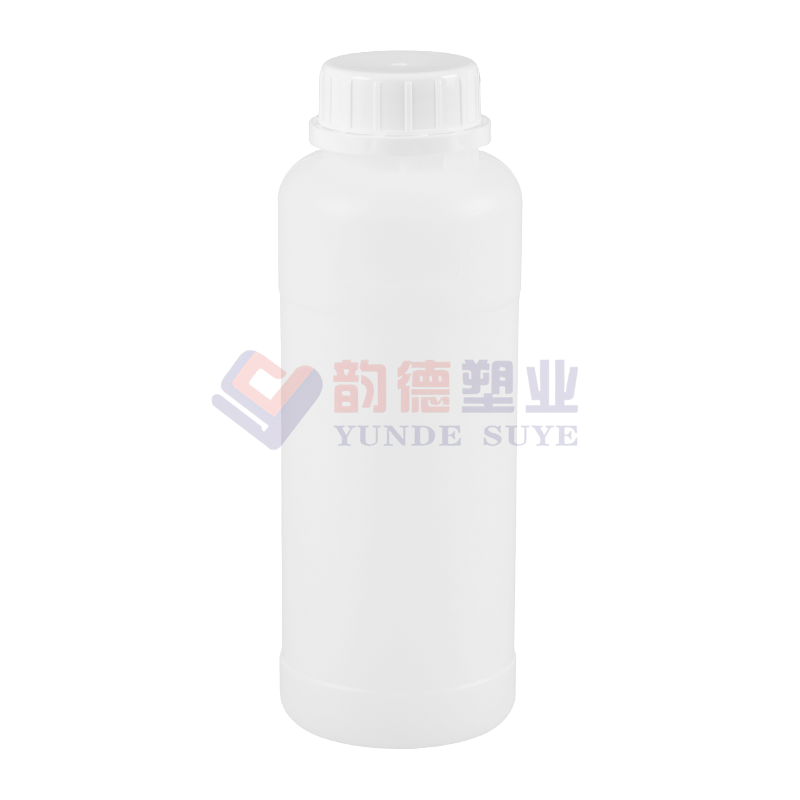Fluorinated Round Bottles
What are the advantages of HDPE round bottles in terms of environmental protection and recycling?
Environmentally Friendly Features of HDPE Materials
HDPE (high-density polyethylene) is a thermoplastic commonly used in packaging container production, offering low energy consumption and high durability. HDPE requires relatively little energy to manufacture, and the amount of waste gas and wastewater generated during production is relatively manageable, making it easier for companies to manage their environmental footprint. Due to its high impact resistance and good chemical stability, HDPE bottles are less likely to break or release harmful substances during use, which helps reduce waste generated by damaged containers and thus lowers the environmental burden. This material also has considerable recyclability, making it a key player in the circular economy.
The Convenience of Recycling HDPE Round Bottles
HDPE round bottles offer high recycling convenience, primarily due to their single-material composition and widespread recycling channels. In practice, HDPE bottles are typically classified as "No. 2 plastic," a clear labeling that enables recyclers to quickly sort and process them. Because HDPE is stable during physical and chemical recycling processes, it can be reprocessed into new packaging containers or other plastic products through cleaning, crushing, and regranulation, extending the material's lifespan and reducing raw material extraction and consumption. Furthermore, its recycling process does not require complex pretreatment, making it easier to handle and reuse than multi-layer composite products.
Positive Impact on the Circular Economy
The high recycling rate of HDPE round bottles provides significant resource support for the circular economy. By reusing recycled HDPE materials, the proportion of new materials used can be effectively reduced, saving on non-renewable resources such as petroleum. This model also promotes the transformation of the plastic packaging industry towards green and sustainable development. Numerous companies have already used recycled HDPE granules in non-food-grade containers, building materials, and other industrial products, achieving resource reuse while contributing to reducing the environmental impact of waste plastics. In some countries and regions, governments have even implemented recycling incentives for HDPE packaging products to increase recycling and reuse rates.

Comparison with Other Plastic Containers
Compared to other common plastics such as PVC and PET, HDPE offers several unique advantages in terms of environmental protection and recycling. While PVC may release harmful substances such as chlorides during recycling, HDPE has a lower risk of decomposition at high temperatures, making it safer to recycle. While PET holds a large market share in transparent packaging such as beverage bottles, HDPE, due to its higher chemical resistance and wider range of applications, has gained a significant position in packaging for pesticides, cleaning products, and cosmetics. This diverse range of applications makes it a highly valuable resource for recycling.
Environmental Protection and Recycling Practice Considerations
Although round HDPE bottles offer significant environmental and recycling advantages, some practical considerations remain. For example, containers with residual chemicals must be thoroughly cleaned before recycling, as this may affect the quality of the recycled pellets. Furthermore, it is best to separate additional materials such as labels and caps from the bottle before recycling to avoid reducing recycling efficiency. Food-grade HDPE bottles must also be strictly sorted according to different hygiene standards to ensure the safety of the recycled material. These measures help improve the value of recycled materials and the quality of the recycled products.
Comparison of HDPE with other common plastics in environmental protection and recycling
| Material Type | Recycling Difficulty | Environmental Performance | Main Application Fields | Recycling & Reuse Rate |
|---|---|---|---|---|
| HDPE | Low | Good | Cleaning products, cosmetics, food outer packaging | High |
| PET | Medium | Good | Beverage bottles, food packaging | High |
| PVC | High | Average | Industrial pipes, some packaging | Low |
| PP | Medium | Good | Food containers, medical supplies | Medium |

 English
English 中文简体
中文简体 Español
Español عربى
عربى











